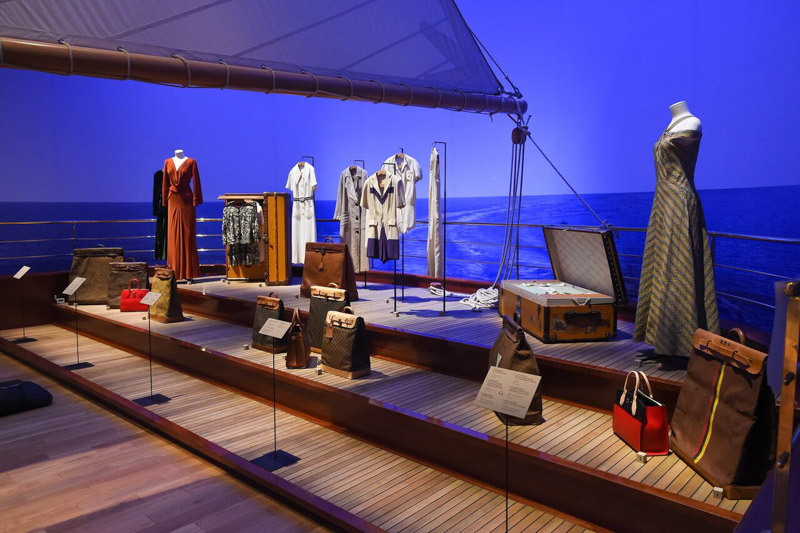 Photo courtesy Louis Vuitton
Photo courtesy Louis Vuitton
Located in the landmarked American Stock Exchange building at 86 Trinity Place, the magical exhibition Volez Voguez Voyagez about the history of the Louis Vuitton company, transforms a historic Art Deco building that has not been in use for nearly a decade. There is a moment in the exhibition where you can see the decorative coffered ceilings, high high above, but each room of Volez Voguez Voyagez is a fully immersive world of beauty and exploration.
Struggling retailers should take note of this exhibition, deliberately located off the commercial paths of New York City. While you might covet the objects inside, the appreciation is first and foremost for the design and aesthetic of the items. Curated like a museum by Olivier Saillard and designed like a high end luxury retail experience by Robert Carson, the exhibition features ten individual rooms, each a fantastical universe that showcases a part of the Louis Vuitton history.
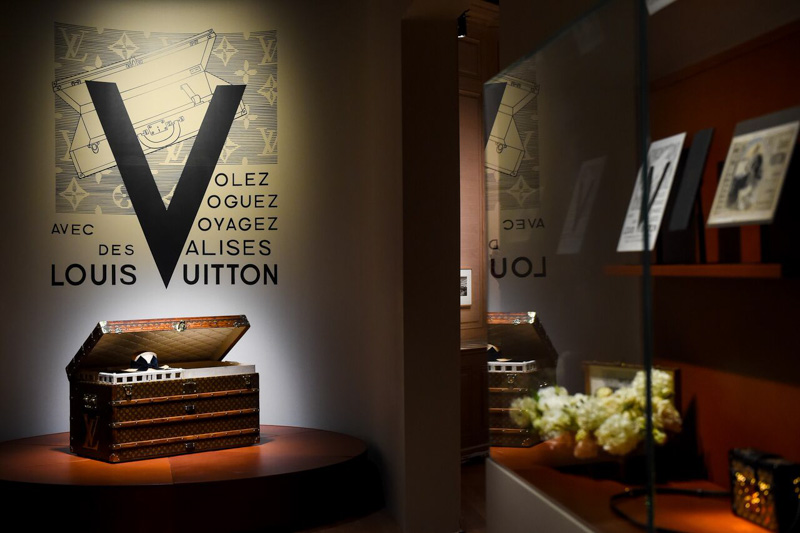 Photo courtesy Louis Vuitton
Photo courtesy Louis Vuitton
Volez Voguez Voyagez is also incredibly Instagram friendly. It begins with the legend of Louis Vuitton himself, who is said to have walked from his home village of Anchay on the Swiss border all the way to Paris, a journey which took him two years. The family of Louis Vuitton, his descendants who have helmed the company and continue to work in the corporation, figure strongly.
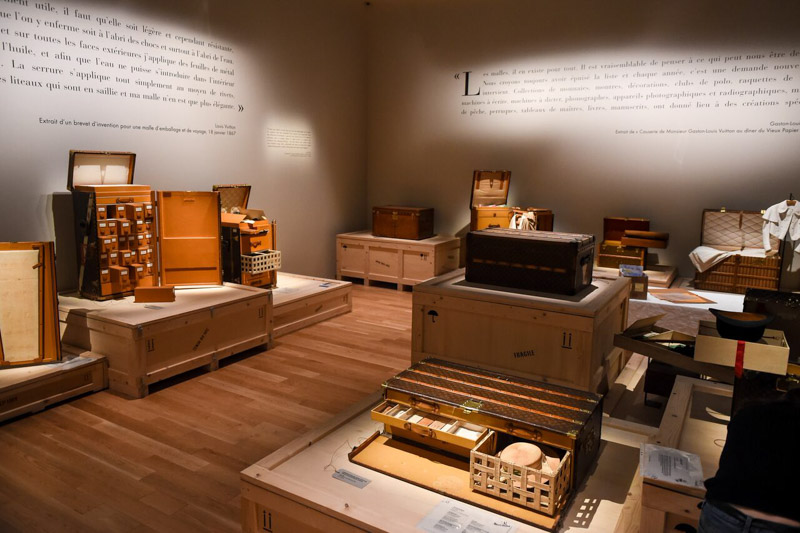 Photo courtesy Louis Vuitton
Photo courtesy Louis Vuitton
We might associate modern Louis Vuitton with its iconic handbags, but it is the travel trunk that anchors the story of the company. This item, both custom designed and part of the company catalog by 1906, “exalted the art of travel,” as the exhibition describes. Indeed, following a rotating trunk that opens the exhibition, a room full of custom made ones show the versatility of the product which has been appropriated for items both lofty and mundane from clothing, tools, to tea and dining sets on the go, champagne boxes, typewriters, paintings, and more.
One of the most striking rooms is crossed by a full size sail and mast, featuring items that showcase the invention of travel as a leisure activity and the rise of yachting. Here you will find not only the steamer trunk on a yacht deck, but trunks that were taken on the Croisière Noire, a mission through Algeria, Mali and the Congo from 1924 to 1925 organized by André Citroën of the French car company. There is even one that folds out into a bed, custom ordered.
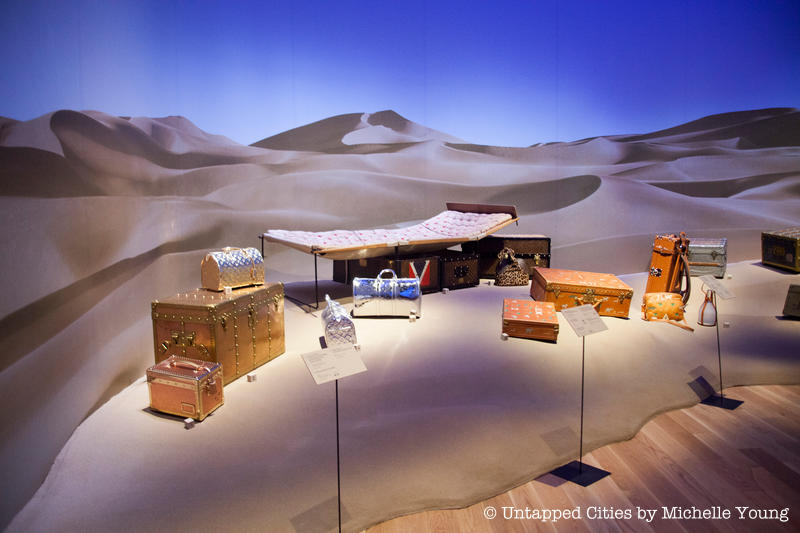
In a long hallway, transformed into a long roadway, display cases show the extreme level of customization necessary to create trunks that would fit precisely into or atop the new automobiles. There are footrest briefcases, picnic trucks, round trucks, and more uniquely shaped trunks, which the company believes were the “prelude to the handbag and fashion bag.”
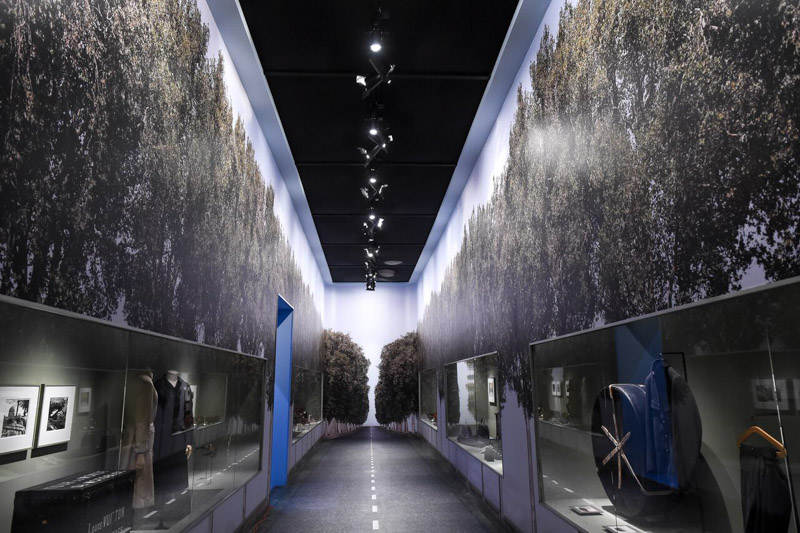 Photo courtesy Louis Vuitton
Photo courtesy Louis Vuitton
Another impressive room, painted completely in sky blue, features a hanging airplane, lined with bags including the Aéro trunk and the Aviette, for women. Just following is a room designed to feel like a luxury train car, with screen windows that mimic moving scenery. Here, the exhibition describes how “traveling became a way of life,” again showing how Louis Vuitton luggage was made to fit perfectly into the compartments of the train.
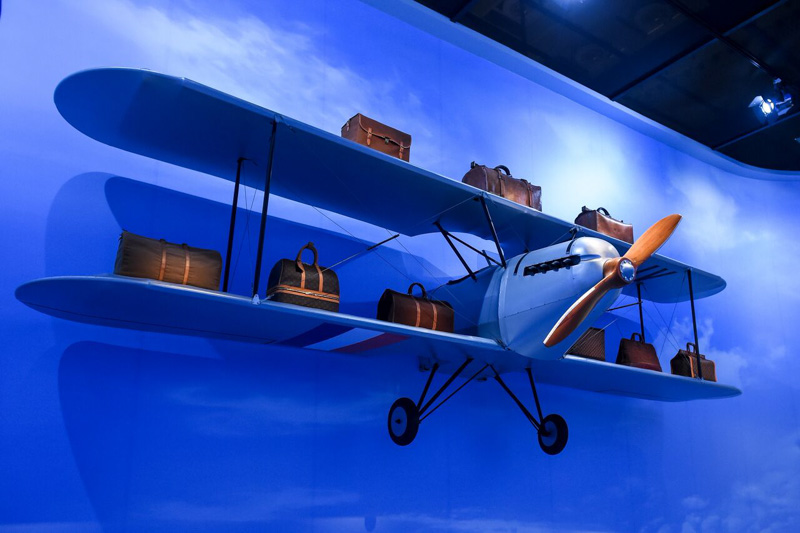 Photo courtesy Louis Vuitton
Photo courtesy Louis Vuitton
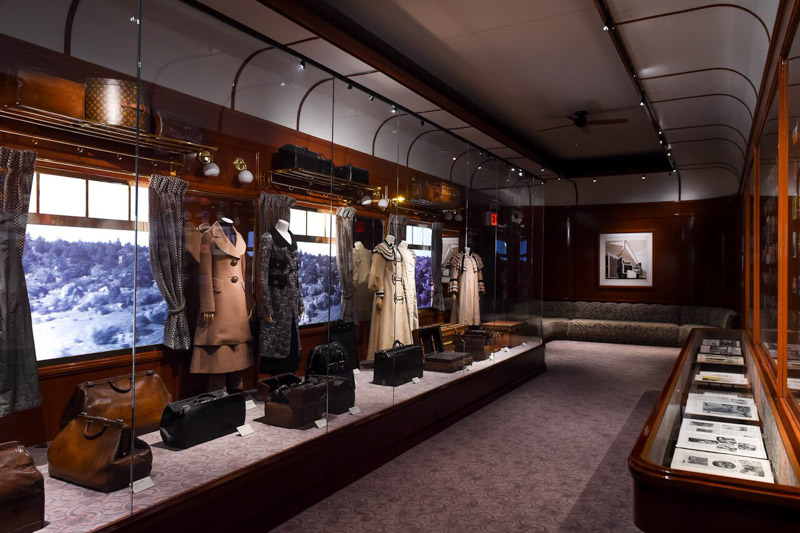 Photo courtesy Louis Vuitton
Photo courtesy Louis Vuitton
The final rooms on this first exhibition floor show the application of the trunk to specific creative lifestyles: writing and library trunks, like one commissioned by Ernest Hemingway (not on display but his order form is), two full of surgical tools from Damien Hirst, and one to carry paintings ordered by René Gimpel, an art dealer for his travels around the world. The company’s relationship with the art world has also impacted the products of Louis Vuitton directly – the collaborations with Takashi Murakami, Richard Prince and Hirst have become iconic moments of the 20th and 21st century collections.
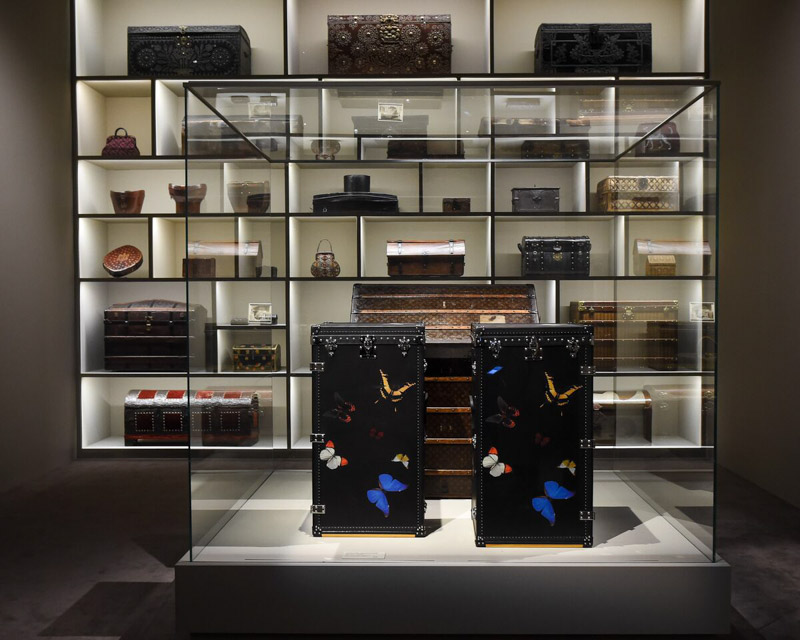 Damien Hirst surgical cabinets. Photo courtesy Louis Vuitton
Damien Hirst surgical cabinets. Photo courtesy Louis Vuitton
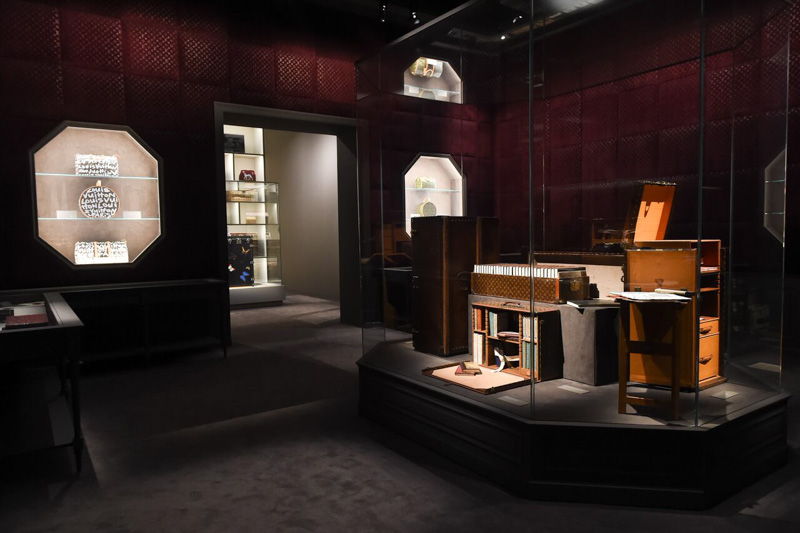 Library trunks. Photo courtesy Louis Vuitton
Library trunks. Photo courtesy Louis Vuitton
A second floor explores the company’s relationship with celebrities, who have worn the clothing of Louis Vuitton and carried the leather goods. Here you will find items that belonged to classic film stars like Greta Garbo (who had a a trunk just for shoes), Lauren Bacall, and Katharine Hepburn and the dresses worn by today’s stars, like Cate Blanchett, Emma Stone, Alicia Vikander and Taylor Swift at events such as the Academy Awards, the Met Ball, and more.
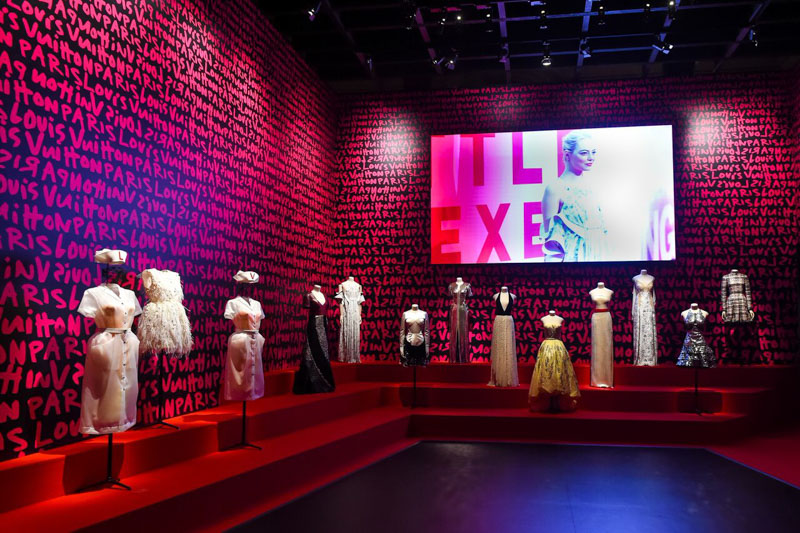 Photo coutesy Louis Vuitton
Photo coutesy Louis Vuitton
One of our favorite rooms near the end of the exhibition showcases collaborations between Louis Vuitton and artists, which includes Cindy Sherman’s Studio-in-a-Trunk, items with Supreme, Stephen Sprouse, Murakami, and a “Twisted Bag” bag by Frank Gehry with his signature curves. The latter, simple in concept, was extremely difficult to engineer with all of the structural components that make up a Louis Vuitton bag. The last area of the exhibition showcases artisans working live, a reminder of the craftsmanship that has always been central to Louis Vuitton.
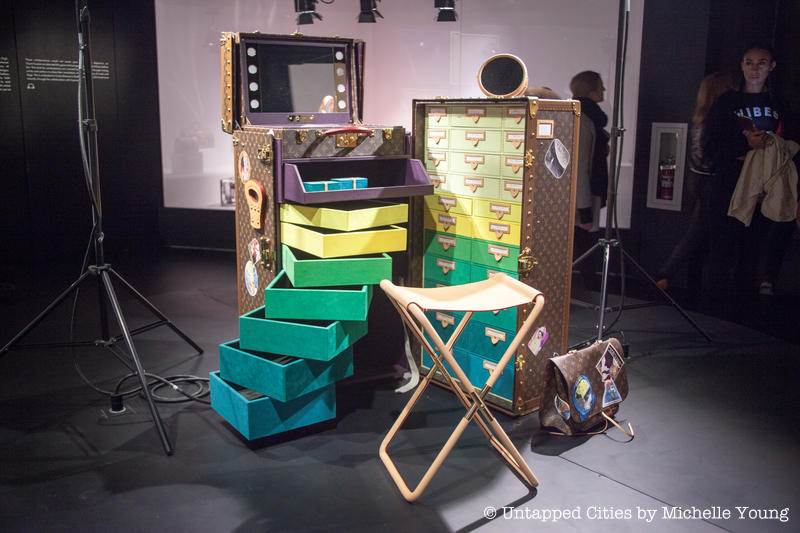 Cindy Sherman’s “Studio-in-a-trunk”.
Cindy Sherman’s “Studio-in-a-trunk”.
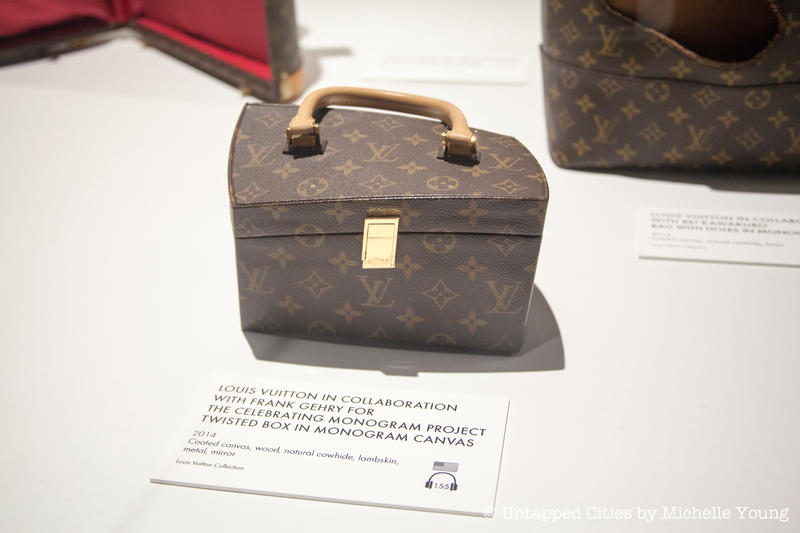 Frank Gehry Twisted Box
Frank Gehry Twisted Box
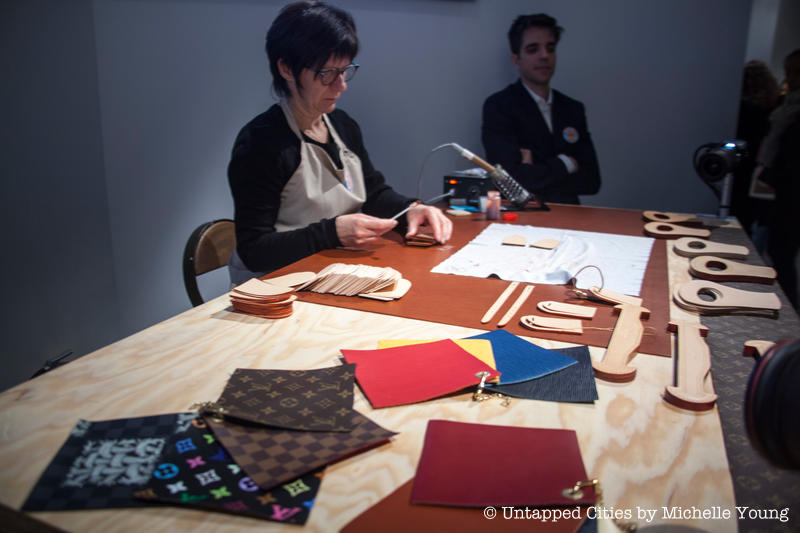 Artisans working live at the exhibition
Artisans working live at the exhibition
Volez Voguez Voyagez is a must-visit for fashion fiends, art enthusiasts and for architectural fans, if only for access into the landmarked American Stock Exchange Building. Known originally as the New York Curb Market, and later the New York Curb Exchange, the structure, designed by Goldwin Starrett and Alan Von Vleck, was built in two stages, one from 1920-1921 and another from 1930-1931. This building, along Greenwich Street, features a large sans serif sign on the facade and the long lines characteristic of the Art Deco period. It was named a city landmark in 2012.
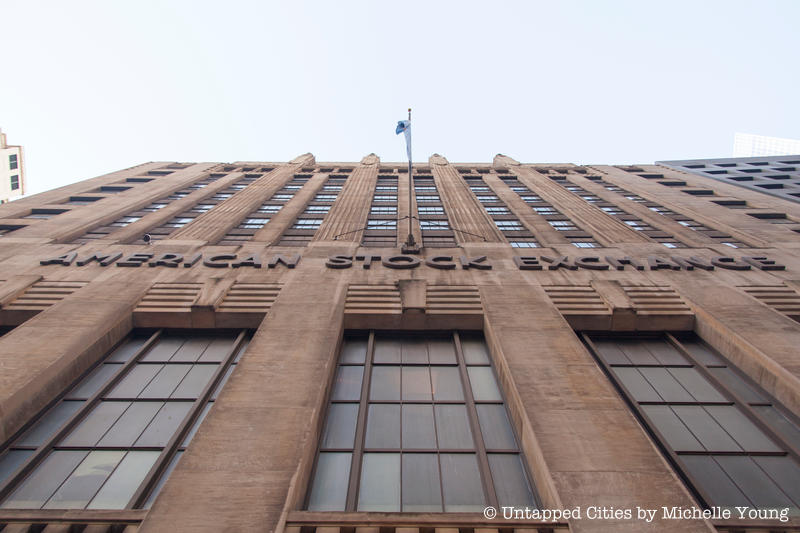
Volez Voguez Voyagez will be here in New York City until January 7th, 2017, whereupon it will go to the next city. The Traveling exhibition has already landed in Paris’ Grand Palais, Tokyo, London and Seoul. Tickets for the exhibition go up two weeks before the visit date, so check regularly for new openings.





